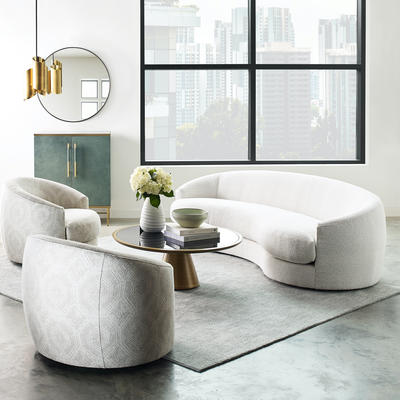I’m hearing about a big Mitchell Gold Sale at the Dump.
It’s supposed to be 50% – 80% Off.
I read one of your other articles about how big discounts are phony.
Is this just another phony Sale?
Actually, this Mitchell Gold Sale is mostly for real!
Although the discount percentages are somewhat manipulated, this is a genuine Sale of discontinued products from a major brand that recently shut down.
Mitchell Gold + Bob Williams, was a well-known high style, mid-price range furniture manufacturer and retailer.
In August, 2023, the company unexpectedly and abruptly closed its factory and retail stores. Employees had very little notice.
The company filed for a Chapter 7 bankruptcy, which requires a total liquidation of all assets.
The Dump is part of the Top 100 Furniture Retailer, Hayne’s Furniture.
Since the 1960s, Hayne’s Furniture has been one of the furniture industry’s biggest buyers of Closeouts.
These are discontinued furniture products that a manufacturer needs to sell off outside of the normal distribution channels.
When Mitchell Gold + Bob Williams was liquidated recently, the company’s assets included 250 truckloads of finished furniture from its showrooms and warehouses.
Haynes is one of the few retailers big enough to buy 250 truckloads of furniture in a single transaction, and then warehouse the items until they can be sold.
Legitimate furniture closeouts are much rarer now than they were back in the 1970s and 1980s.

From 1977 through 1984, I was a buyer for one of Hayne’s biggest competitors. My store fiercely competed with Haynes to find closeouts at the 4 furniture markets we both attended each year.
The biggest markets were in High Point, NC. Every April and October, the buying staff from my store would race throughout North Carolina, trying to find, negotiate and buy excess inventory from furniture manufacturers before Haynes (and a few smaller competitors) could locate and buy them first.
The North Carolina markets were 10 days long. The first 5 days were exclusively devoted to finding and buying closeouts. The last 5 days were spent shopping for regular line merchandise.
Each factory that sold us regular line goods was expected to provide us with periodic closeouts if they wanted to continue selling us their regular merchandise.
The retailer I worked for had annual sales of about $50 million in the 1970s and 1980s. Haynes was slightly larger.
Our stores dominated the Washington, DC region. Haynes was in Norfolk and Virginia Beach. We weren’t directly selling against each other, which allowed us to team up periodically on especially large closeout offerings.
50 years ago, there were far more wood furniture factories in the U.S. than there are now. Over 80% of wood furniture sold in the U.S. is currently made overseas, primarily in Asia.
Furniture factories had far less control over their inventories. Many factories required retailers to place orders 6 months ahead of when they would need the furniture. It was not unusual for retailers to cancel orders they had placed many months before if the items didn’t sell as quickly as estimated.
When a large customer cancelled a large order that had already been cut and warehoused, it would become a Closeout. The manufacturer would sell it off for whatever they could get, hoping it wouldn’t be too far below their cost.
The discount percentage varied, depending on the manufacturer and the quantity that needed to be moved.
For example, one company might sell complete bedrooms at 40% off and left over odd pieces for those sets at 60% off.
Odd pieces that could not be made into complete sets were purchased at the biggest discounts. It wasn’t unusual to buy odd headboards or nightstands or buffet tops that were missing the bottom credenzas at 90% off.
